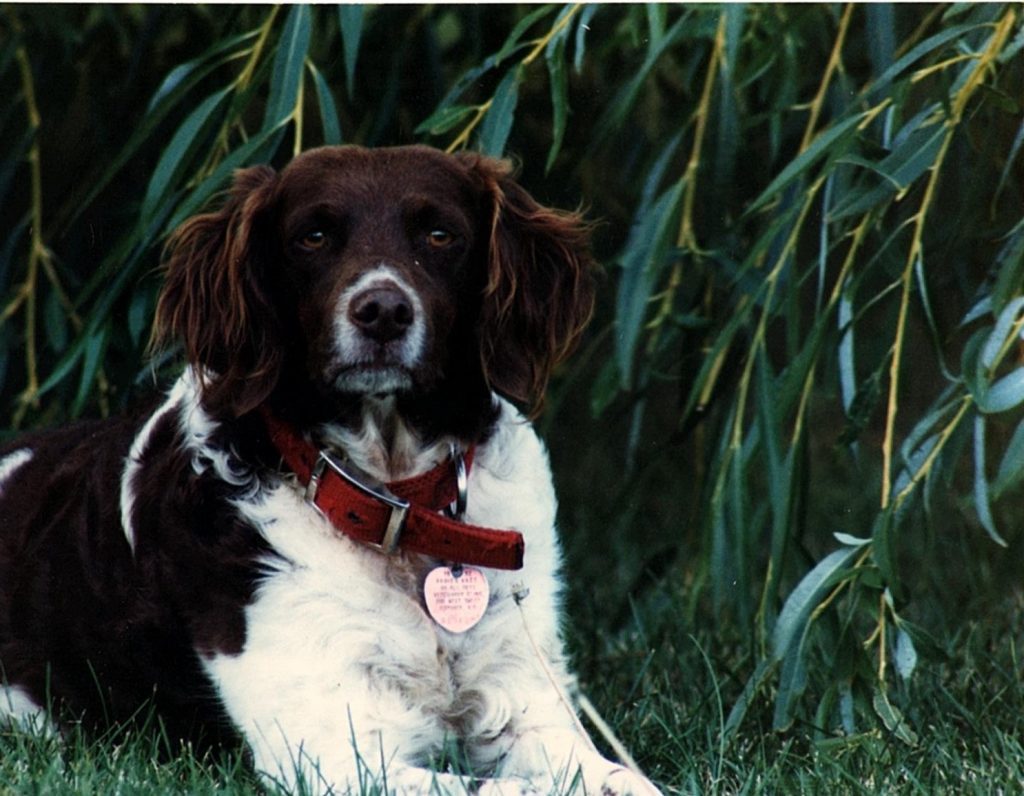

Knowledge can unlock doors to many opportunities.
And knowledge is key when it comes to unlocking a hunting dog who inadvertently ventured into a trap or cable device when in the field.
It’s better to be proactive, educated, and prepared when it comes to dealing with in-the-field injuries and that includes knowing what to do in the event a dog becomes entangled in a trap or cable device as winter and trapping season approaches.
One of the best ways a dog owner can become educated is obtaining the three N.D. Game and Fish Department brochures developed by the department’s furbearer biologist Stephanie Tucker – herself a trapper and dog owner.
Part of a wide array of Game and Fish Department specialty publications and brochures, the brochures include “Foothold Traps – Identification, Use, & Removing A Dog”, “Cable Devices – Identification, Use & Removing A Dog”, and “Body-Grip Traps – Identification, Use, & Removing A Dog”.
All three booklets can be ordered from the Game and Fish Department website, gf.nd.gov, or are available at Game and Fish Department offices and many cooperating agencies as well as by mail by calling 701-328-6300 to request copies.
Finding your dog in a trap or cable device can be gut-wrenching but the best thing a dog owner can do is try to remain calm, which helps a person focus on quickly and competently removing the dog from the device.
It helps to understand that a cable device works much like a dog collar. Sometimes the cable’s lock can be slid to enlarge the loop and remove the dog. Or, by carrying a cable cutter designed to cut galvanized aircraft cable a person can also cut the wire to remove the dog.
Education is important, but so too, is awareness.
Public lands such as Game and Fish Department Wildlife Management Areas are meant for multiple user groups, including trapping and snaring. It’s a good idea for all dog owners – not just hunters but anyone simply hiking in the outdoors on a WMA – to familiarize themselves with trapping regulations, seasons, trap and cable device types, and release techniques and equipment.
Trappers with traditional foothold or body-grip traps and cable devices are required to obtain written permission from private landowners. When a hunter has the opportunity to contact the landowner to ask for hunting permission, it doesn’t hurt to ask if they are allowing trapping or the use of cable devices so a person is aware of their potential presence.
Taking safety and awareness a step farther, it can also be beneficial to find out what other state and federal agencies allow – or don’t allow – on the public land they manage when it comes to trapping and cable devices.
Regardless of land ownership, dog owners should keep track of their dogs and not let them out of their sight for prolonged periods of time, whether trapping or hiking.
The idea of developing the brochures evolved because of dog/trap encounters in neighboring states as well as occasional situations in North Dakota.
Each brochure describes the device and how it works on its intended target, whether a body-grip trap, any of the various types of foothold traps, or a cable device – and perhaps most importantly - explains techniques for safely and efficiently removing a dog from the device, including drawings to help illustrate devices and removal techniques.
The brochures are free. Go to the Game and Fish Department website link, gf.nd.gov/publications/order, to order a copy of the brochures detailing information on how to release dogs from traps and cable devices as well as any of the other wide array of booklets, brochures, and posters available at no cost.
A dog owner doesn’t have to be a trapper or biologist to know what to do. They simply need to get the brochures and become educated and aware.
It can save a dog by sharing that knowledge with others.